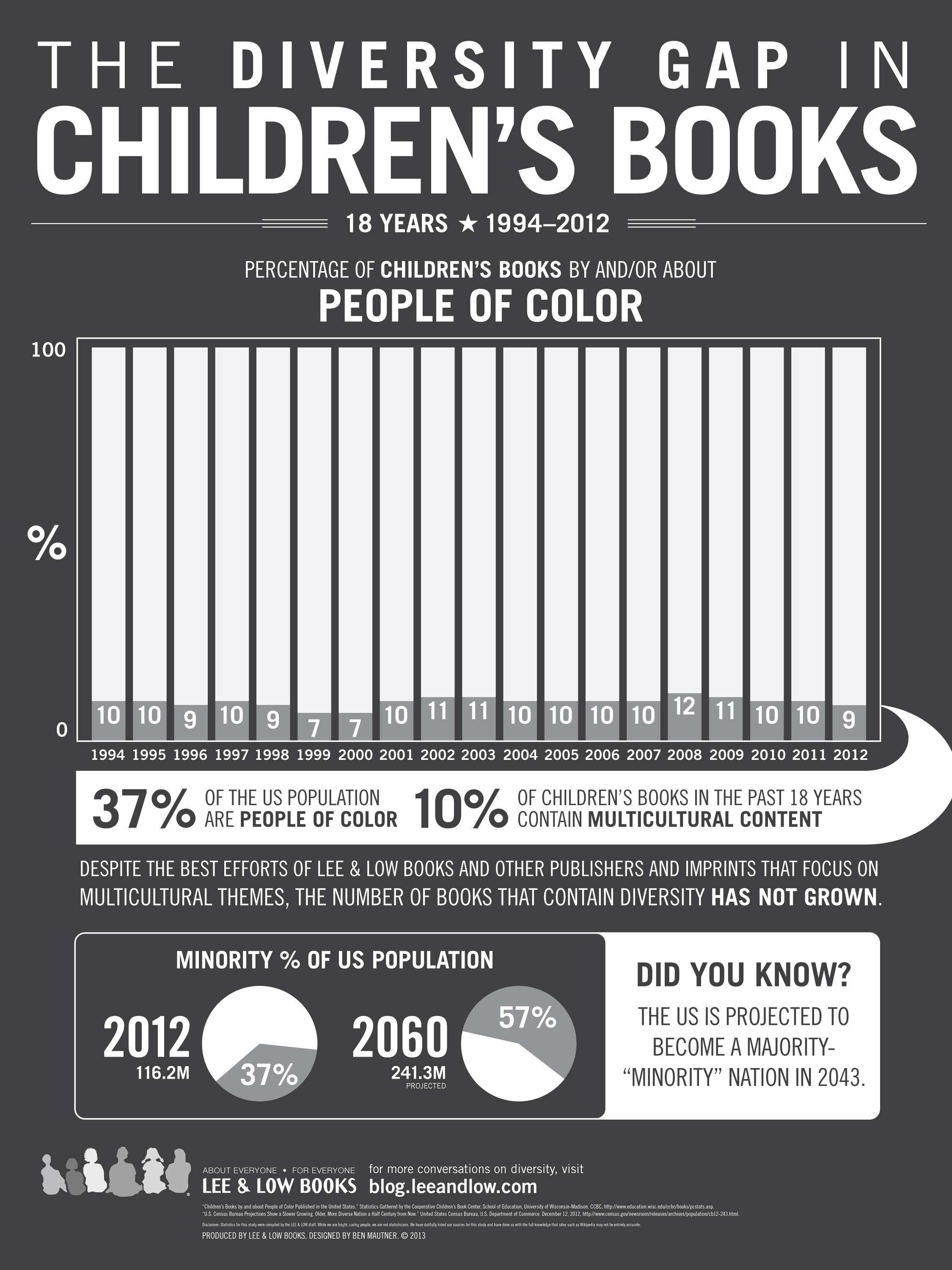 Lee & Low Publishers reports that the “diversity gap” in kids’ books hasn’t changed in the last 18 years – even though 37% of the U.S. population now comprises people of colour (a term I don’t like because it includes purple and cyan, but there you go).
Lee & Low Publishers reports that the “diversity gap” in kids’ books hasn’t changed in the last 18 years – even though 37% of the U.S. population now comprises people of colour (a term I don’t like because it includes purple and cyan, but there you go).
Pale-skinned people like me are slated to become a minority by 2060, yet up to 91% of kids’ books today are about people roughly the same shade as me & my family.
This isn’t good for anyone – especially whitish folks like my kids, who look up from their reading to see a nation far more diverse than anything they see in books.
(True, we live in Israel, not the U.S., but yeah, it’s far more ethnically diverse than anything you might picture!)
The solution isn’t stocking up on books about black kids, written by black writers. Change will only come when our shelves are stocked with TRUE diversity, books that reflect the true cultural context of our lives. Books by every-colour authors, about every-colour kids.
Not all-black or all-white, but a rainbow
Here are five “every-colour” books you can keep on your bookshelf and read to your kids to help them understand what a big, wide, wonderful world this is!
Asian voices
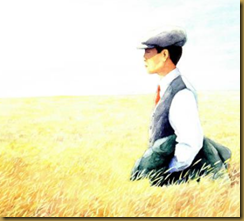 1. Allan Say, Grandfather’s Journey. A moving story, told with simplicity and honesty, about the difficulties of finding yourself in any foreign land.
1. Allan Say, Grandfather’s Journey. A moving story, told with simplicity and honesty, about the difficulties of finding yourself in any foreign land.
I don’t want to include a lot of immigrant stories, but I do want to mention The Arrival, by Shaun Tan, another fabulous tale of displacement and foreignness, told entirely with stunningly original images and no words. However, the people in the picture are all technically caucasian, so I suppose this doesn’t count as diversity (or does it?).
6. The Story of Little Babaji, by Helen Bannerman. This is a story that has evolved. When I was growing up, it was one of my favourites. In those days, it was called The Story of Little Black Sambo.
In this modern version, with illustrations by Fred Marcellino, the story has hardly changed, but the illustrations reflect the real life of a little boy growing up in India. The original was based on the confused supposition (common in those days) that “black” people live in India.
Marcellino’s sensitive illustrations and subtle text changes have given a vibrant new life to this classic book.
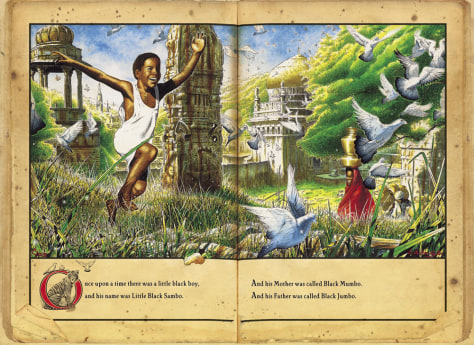 If you’re interested in this perennial favourite story, also check out illustrator Christopher Bing’s more controversial 2003 version. He’s kept the original title, and has created a fantasy world in India where the eponymous black boy has his tiger adventure.
If you’re interested in this perennial favourite story, also check out illustrator Christopher Bing’s more controversial 2003 version. He’s kept the original title, and has created a fantasy world in India where the eponymous black boy has his tiger adventure.
I liked the book enough, but don’t really see the need for two version. Hmm… looks like this version is out of print. It’s a shame.
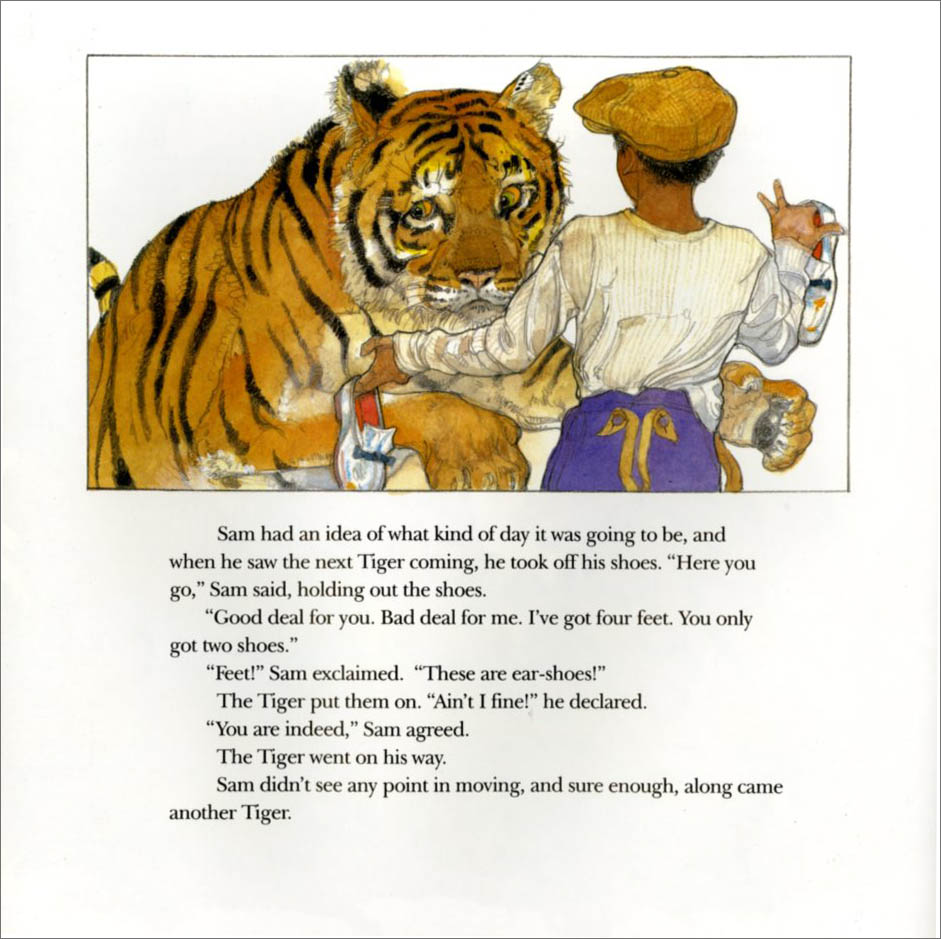 Julius Lester and Jerry Pinkney did one as well, called Sam and the Tigers, but although this version has the black-author cred that the others lack, from the art to the story, I don’t like it very much.
Julius Lester and Jerry Pinkney did one as well, called Sam and the Tigers, but although this version has the black-author cred that the others lack, from the art to the story, I don’t like it very much.
 For more from India, albeit another one by a non-Indian writer, you might want to check out The Monkey and the Crocodile. One of my earliest memories is of when I was 3 and my father came back from India with a comic book full of monkey and crocodile stories. I loved them!
For more from India, albeit another one by a non-Indian writer, you might want to check out The Monkey and the Crocodile. One of my earliest memories is of when I was 3 and my father came back from India with a comic book full of monkey and crocodile stories. I loved them!
Black voices
2. The Snowy Day, by Ezra Jack Keats
It’s probably not PC to like this book anymore, because it was created by a white author / illustrator. But I’m sticking it in here anyway. Why the heck not? A black kid has a ton of fun in the snow. It’s old-fashioned, it’s simple and beautifully drawn, and there’s a reason parents of all colours have been buying it for the last fifty years.
3. Bringing the Rain to Kapiti Plain, by Verna Aardema
Want to hear something cool? James Earl Jones reading this Kenyan folktale on Reading Rainbow (in some places, his voice was even too deep for us to listen to this story while we were driving in the car).
Watch it here:
Other / mixed ethnicities
 4. More, More, More said the Baby, by Vera B. Williams. I have already raved about this book over here because it’s not afraid to show a world in which kids live happily with grit, mixed financial circumstances, and a little uncertainty. The kids in this book are Asian, black, white, and everything in between. A light-skinned grandmother is shown loving her dark-skinned grandbaby and everybody gets along fabulously.
4. More, More, More said the Baby, by Vera B. Williams. I have already raved about this book over here because it’s not afraid to show a world in which kids live happily with grit, mixed financial circumstances, and a little uncertainty. The kids in this book are Asian, black, white, and everything in between. A light-skinned grandmother is shown loving her dark-skinned grandbaby and everybody gets along fabulously.
 5. Lima’s Red Hot Chili, by David Mills, illustrated by Derek Brazell. When Lima bites into a red-hot chili, what does it take to calm the burning on her tongue? This book is available in a variety of international languages (including Spanish, Somali and Gujarati), and tells a painfully spicy story any kid can relate to.
5. Lima’s Red Hot Chili, by David Mills, illustrated by Derek Brazell. When Lima bites into a red-hot chili, what does it take to calm the burning on her tongue? This book is available in a variety of international languages (including Spanish, Somali and Gujarati), and tells a painfully spicy story any kid can relate to.
7. Robert Munsch, From Far Away and A Promise is a Promise.
 From Far Away is about a girl who arrives in Canada from war-torn Lebanon and has to adapt to life in a whole new kind of world. Children’s Library Review calls this “a well-intentioned but ultimately unsuccessful book” and to some extent I agree; it falls short of Munsch’s usual writing standard. But it’s hard to find books like this that open the conversation, so I’m including it here anyway (caution: some of the situations described in this book may be scary for very young children).
From Far Away is about a girl who arrives in Canada from war-torn Lebanon and has to adapt to life in a whole new kind of world. Children’s Library Review calls this “a well-intentioned but ultimately unsuccessful book” and to some extent I agree; it falls short of Munsch’s usual writing standard. But it’s hard to find books like this that open the conversation, so I’m including it here anyway (caution: some of the situations described in this book may be scary for very young children).
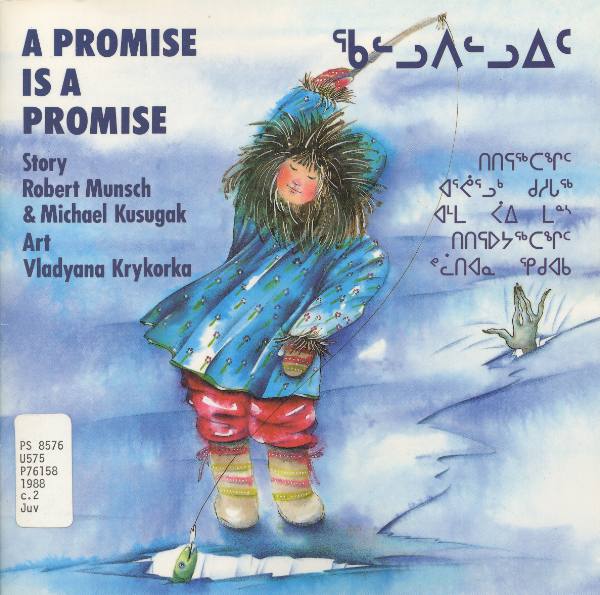 A Promise is a Promise, a collaboration with native Canadian author Michael Kusugak and Czech-Canadian illustrator Vladyana Krykorka, is a study in ethnic diversity all by itself.
A Promise is a Promise, a collaboration with native Canadian author Michael Kusugak and Czech-Canadian illustrator Vladyana Krykorka, is a study in ethnic diversity all by itself.
A longtime favourite around here, it tells the slightly-scary story of an Inuit girl (in Canada, it’s rude to call them Eskimos!) who ventures out on the sea ice, against her parents’ warnings, and encounters the Qallupilluit, legendary creatures of native folktales (originally invented by parents, of course, to keep kids safe!).
The cover illustration remains one of the creepiest things I have ever seen in a kids’ book. For years, my older son couldn’t even look at it; he’d literally cover his eyes when we came to that part of the book.
With this book, I like the authenticity of the settings, like the fact that the family lives in a simple trailer. Despite this, the love in the family is apparently, as they all huddle in bed to warm up Allashua after her fall into the frozen sea.
8. I know I said seven, but here’s an eighth book that I think skilfully captures a lot of the more wonderful aspects of my own ethnicity: Something from Nothing, by Phoebe Gilman.
The settings are authentic here as well, with an old-world warmth to the illustrations that’s fond but not overly nostalgic. For a non-Jewish audience, the book reads wonderfully, and there are no difficult words to deal with here. And don’t forget to follow the parallel saga of the mouse family living beneath the floorboards!
More great reading… and your suggestions?

 Here’s a GoodReads list that may inspire you to find more multicultural kids’ books (they’ve included The Five Chinese Brothers and The Story about Ping), which I left out because I don’t know how well they reflect Chinese values).
Here’s a GoodReads list that may inspire you to find more multicultural kids’ books (they’ve included The Five Chinese Brothers and The Story about Ping), which I left out because I don’t know how well they reflect Chinese values).
There are so many books about every possible ethnicity, skin colour and national origin! So at this point, I figure I’d better stop ranting about my favourites and open it up to you… especially to share newer books that I might not know about (yeah, there ARE kids’ books I know nothing about!).
Help me heal this gap: share your favourite multicultural / diverse kids’ picture books in the Comments section below!

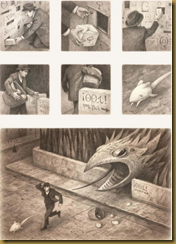







0 comments:
Post a Comment
As always, I love to hear from you.